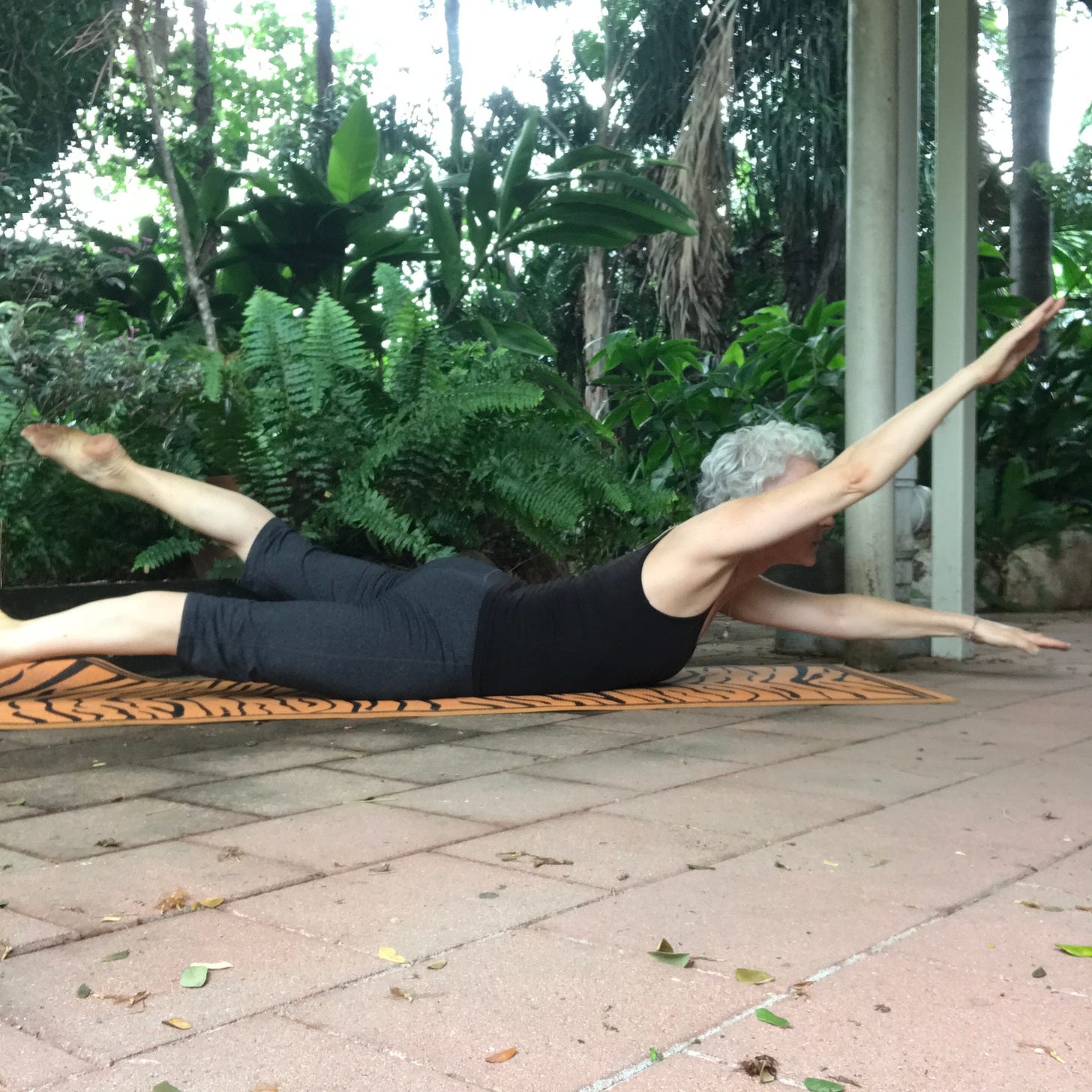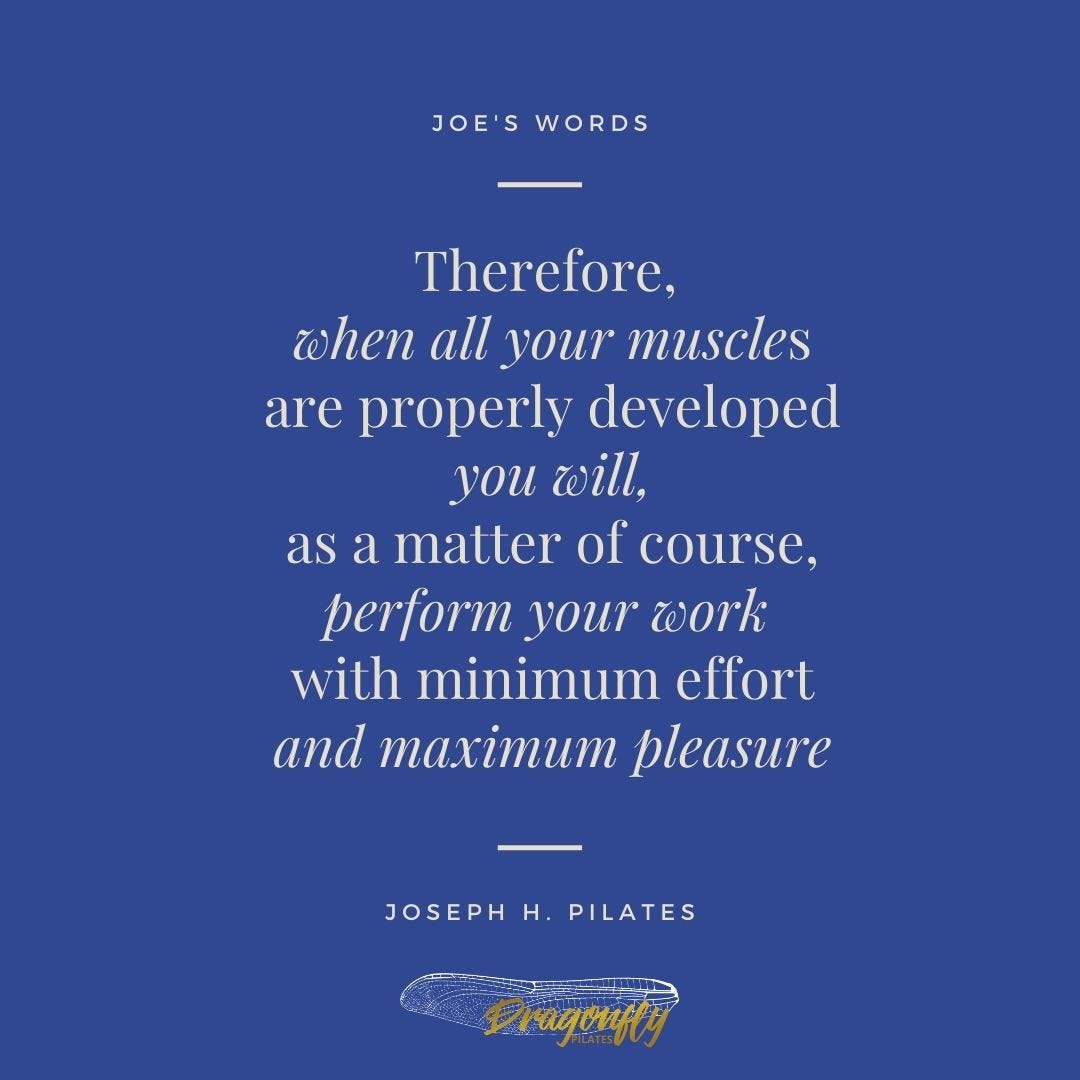Pilates Exercise Dive: Swimming
A quick look at the skills needed and at additional Pilates Mat exercises to lay the groundwork of strength and body awareness

What’s so great about swimming?
I’m not a swimmer, more like a flounder-er, but here are some things I’ve thought of:
you move forward
you’re in the water, yay buoyancy
you’re connecting with nature
you build strength
you have to become aware of your breath
it can be a meditative experience as you attain a nice rhythm
What’s so great about the Pilates Swimming?
Well, this I’m pretty confident to speak about:
you move forward in your Pilates practice
you’re on your mat (or barrel)
you connect your body into the space around you
you build strength
you have to become aware of your breath
it can be a meditative experience as you attain a nice rhythm
you gain instant feedback with how well you’ve integrated your arms to your shoulder girdle & your legs to your pelvis
you become aware of how smoothly you’re moving (or not)
you get information on which skills you need to focus on earlier in class so that…
…when you’re performing the exercise, you’re confident you’ve laid the groundwork to do the best version of Swimming that’s available to you in that given moment.
Simple, right?
Let’s dissect
Swimming is an exercise that comes late in the Pilates flow, in Joseph Pilates’ original 34 exercises it comes in at #24 giving you plenty of time to build the necessary skills to give it a red hot go when it comes around.
So, what skills are those?
Before we continue let’s describe Swimming which shouldn’t take too long, right?
Ahem…
Pilates Swimming is water swimming on dry land.
Lie on your belly
Lift up your arms and legs
Bring your spine into extension
Flutter kick your arms and legs in opposition to each other (i.e. right arm and left leg both lifting up at the same time)
Breathe easily: in through the nose and out through the mouth.
Seems pretty simple to me but if you’re after some details check out the video tutorial at the bottom of the post
What are the skills needed to accomplish this fabulous exercise?
AND
Where might you have already had the chance to practice said skills in your Pilates class flow??
Let’s Take A Look:
Skill: Strong (and supported) Back Extension, aka an arched back, with the feeling of an even curve from your neck to low back.
Exercises: Swan, Single Leg Kick, Double Leg Kick, Shoulder Bridge
Secondary Skill from above: Flexibility in the Thoracic Spine
Exercises: same as above
Skill: Connecting the Legs into the Pelvis and having the strength to hold them up off the ground.
Exercises: Pretty much every exercise but maybe more specifically - The 100, Roll Up, Single Leg Circle, The Stomach Series, Corkscrew, Hip Circles, Teaser, Neck Pull…
Skill: Hamstring and Glute Engagement/Strength to lift your legs up off the floor behind you into hip extension while the hip flexors stay open and long.
Exercises: See Back Extension above and add The Scissors, Kicking Variations in Shoulder Bridge, Side Leg Kick Series, & Kneeling Side Leg Kicks
Skill: Connecting the Arms into the Back through the rotator cuff muscles and upper back strength.
Exercises: To be very, very basic, you can find this just by lying down flat on your mat and then in each and every exercise where you’re again lying down, but also in The 100, Roll Up, Stomach Series, Spine Stretch, Corkscrew, Saw, Swan, Single & Double Leg Kick…
Skill: Full, Big, Easy Breathing that supports what you’re asking the body to do
Exercises: You guessed it - Every. Single. Exercise!
Skill: Lifting & Engaging the Abdominal Wall without scooping (because it’s going to be stretched when you’re arched.
Exercises: You should be keeping length in the abs in all exercises but to keep the length while your spine is arched - Swan, Single & Double Leg Kick, & Shoulder Bridge
Skill: Coordination of Different Limbs doing different tasks
Exercises: Single Leg Circle, Single Leg Kick, Scissors, The Criss Cross, Side Leg Kick Series, Kicking variations in Shoulder Bridge
In Conclusion
Those are just some of the ideas, with corresponding exercises, that I think will help you achieve a beautiful set of Swimming and highlights the magic of the Pilates Method.
Really if we just think that every Pilates exercise gives us insight and information for every other exercise, we can keep our practice pretty simple.
It helps me to look at the Matwork (or any set of exercises on any piece of equipment for that matter) as an interconnected framework to build the skills my body needs so I can move with ‘spontaneous zest and pleasure’.
Yay Pilates!
Catch you next time, and don’t forget to watch the video tutorial below Joe’s quote
xBec
The information contained above is provided for information purposes only. The contents of this blog are not intended to amount to advice and Rebecca Forde disclaims all liability and responsibility arising from any reliance placed on any of the contents of this post




